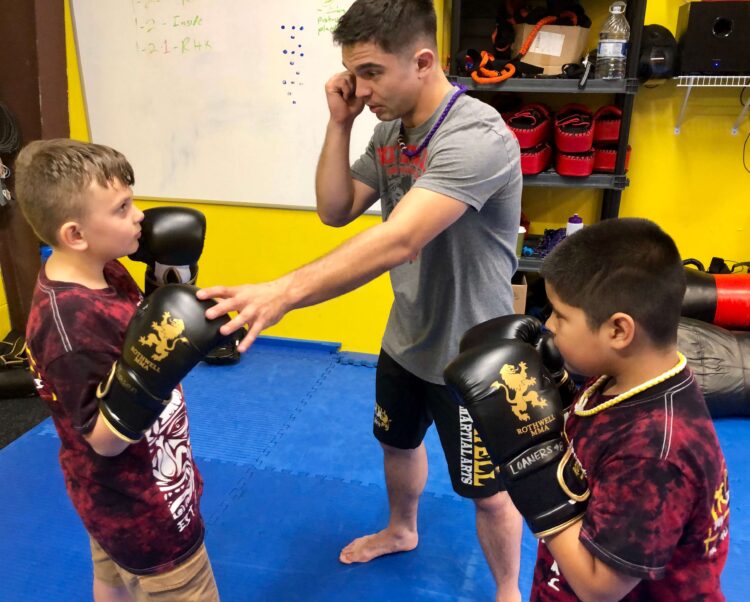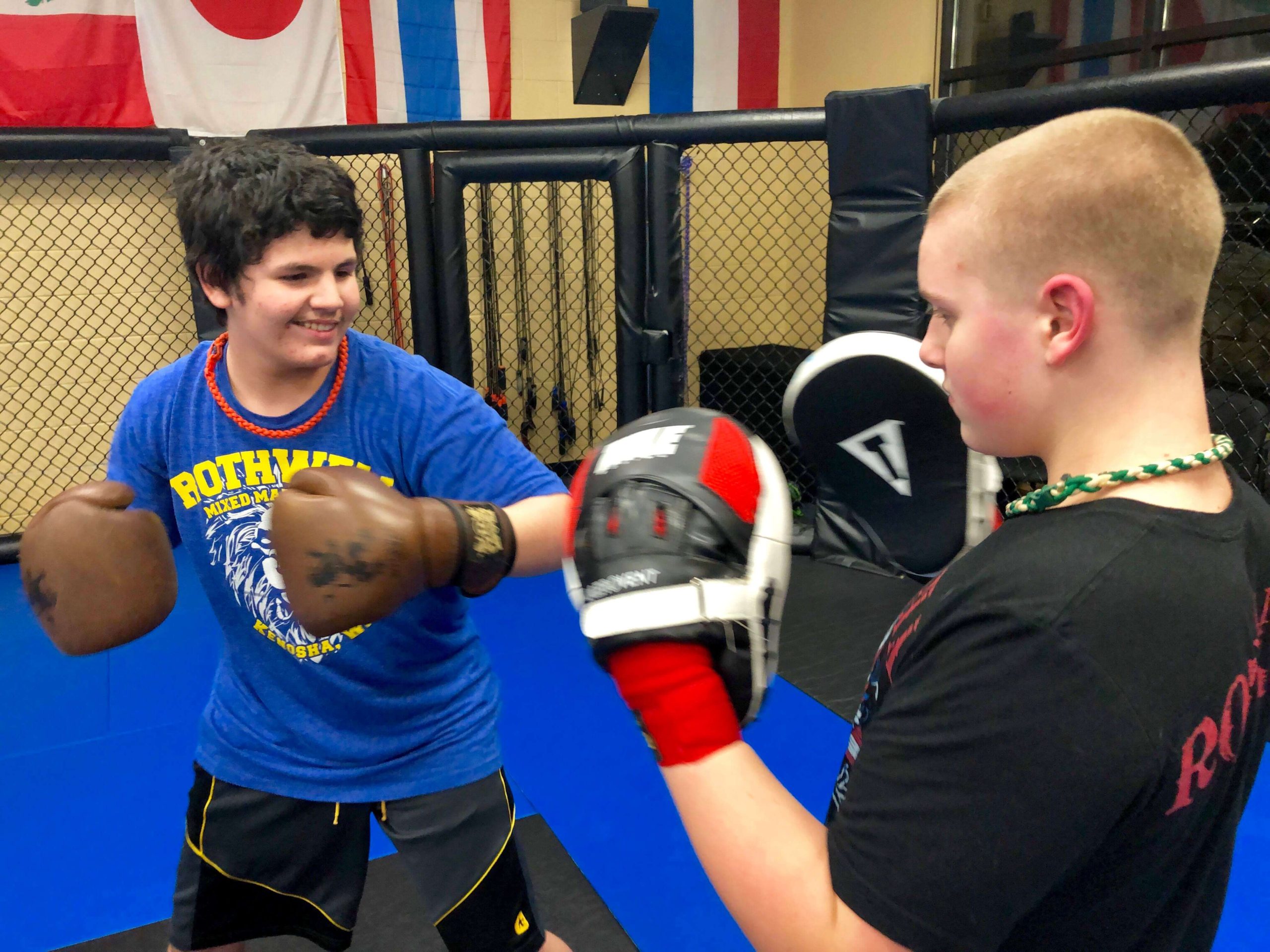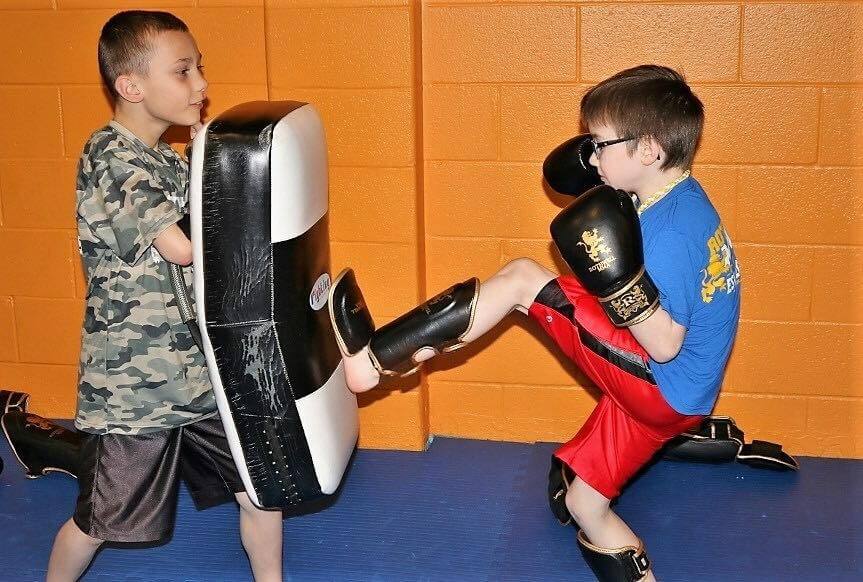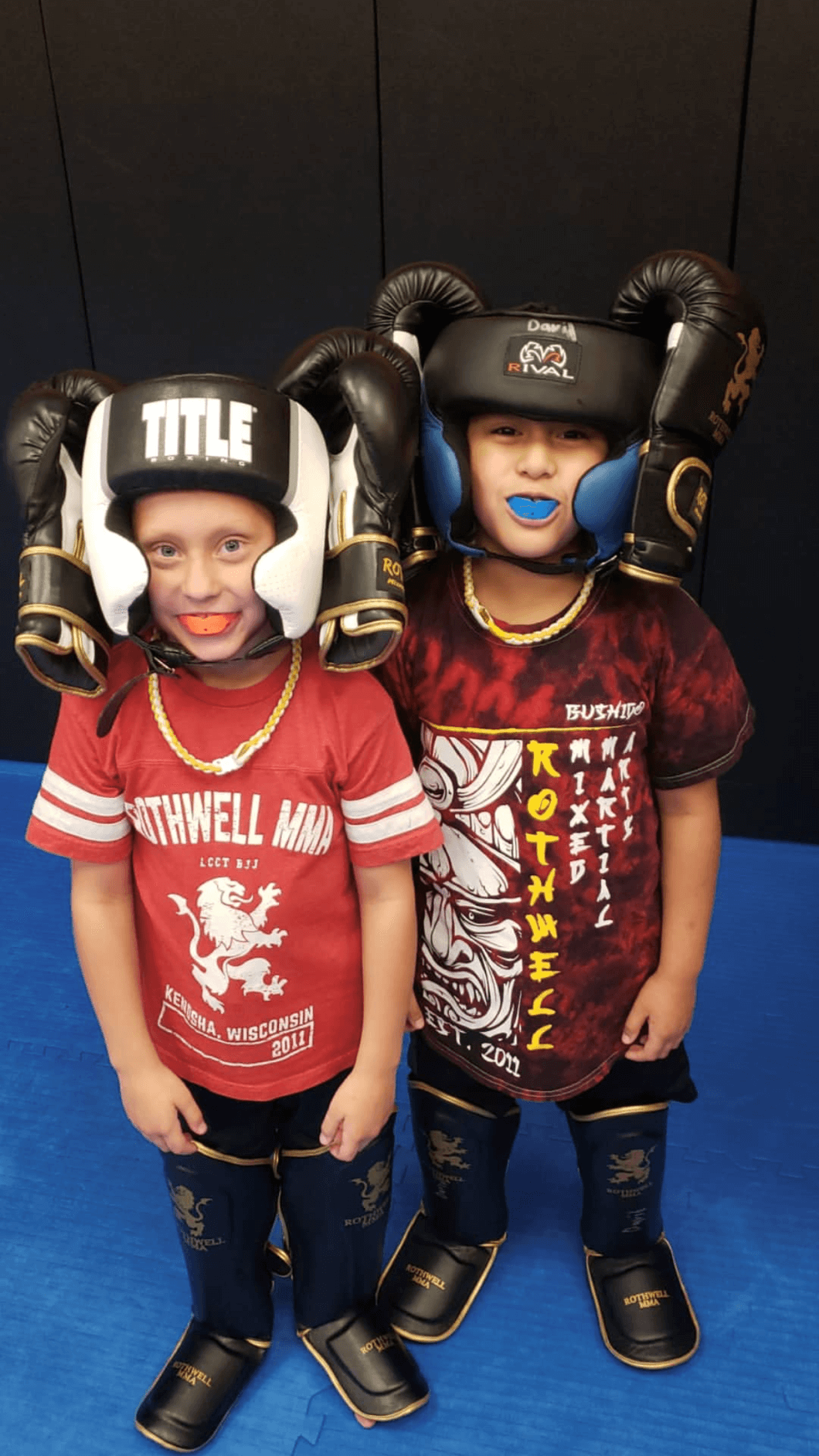Youth Kickboxing
Students develop strength, focus, discipline, & self-esteem while learning to defend themselves.
Youth Kickboxing
Students develop strength, focus, discipline, &
self-esteem while learning to defend themselves.

CONFIDENT & READY TO STRIKE!
Kickboxing will give your child the self-esteem and skills needed to stand up for themselves. Kids will develop strength, focus, and discipline while having fun! This MMA-style “Kickboxing” class is an integration of traditional hand-to-hand combat techniques including Boxing, Kickboxing, Muay Thai, Karate, and Taekwondo. We teach proper form of punches, kicks, elbows, knees, defenses, footwork, & body movement.
CONFIDENT & READY TO STRIKE!
Kickboxing will give your child the self-esteem and skills needed to stand up for themselves. Kids will develop strength, focus, and discipline while having fun! This MMA-style “Kickboxing” class is an integration of traditional hand-to-hand combat techniques including Boxing, Kickboxing, Muay Thai, Karate, and Taekwondo. We teach proper form of punches, kicks, elbows, knees, defenses, footwork, & body movement.

Kickboxing
Class Description
Students will learn how to move and control their bodies, increase strength and fitness, and improve coordination and athleticism. They will also learn when it is appropriate to use Kickboxing techniques, how to practice self-control and respect, and to work as a cooperative team member. These skills will not only improve students quality of life, but can enhance performance in other sports and activities.
A typical Youth Kickboxing class begins with a warm-up, followed by a technique demonstration/lesson. Then, students practice the technique with a partner. Students use Thai pads, focus mitts, and/or kick shields to “catch” their partner’s punches and kicks. During class, students will not get hit in the head or body – they will only hit the pads. Pairing students of different levels requires them to teach and learn from their peers. Students improve their communicate skills and practice patience while improving their own martial arts skills. Structured games and sparring exercises put their skills to the test.




Discover the world of Kickboxing. Watch your child learn new skills and boost their confidence with every move. Reserve a complimentary class and see it in action for yourself.
FREE TRIAL CLASS
Discover the world of Kickboxing. Watch your child learn new skills and boost their confidence with every move. Reserve a complimentary class and see it in action for yourself.

Expert Instructors
WI DSPS licensed youth instructors

James Bennett
Jiu-Jitsu Coach, blue belt

Jordan Ruskell
Kickboxing Coach, brown belt

Cody Linne
Kickboxing Coach, black belt
Expert Instructors
WI DSPS licensed youth instructors

James Bennett
Jiu-Jitsu Coach, blue belt

Jordan Ruskell
Kickboxing Coach, brown belt

Cody Linne
Kickboxing Coach, black belt
Take it to the next level. . .
Students put what they learn into practice during light sparring while wearing appropriate protective equipment. Sparring is a more realistic application of Kickboxing techniques where students apply offensive and defense techniques at a reduced level of intensity and power.
Kickboxing keeps students excited about learning and progressing with a traditional belt system. Students begin as a white belt and work their way towards a green belt. After showing progress, a “stripe” is earned. After 4 stripes, the student knows they are ready to test for their next level belt. Belts are earned, not given. Each belt test has a specific set of moves and techniques that must be demonstrated. The student will know what is on the test and will practice the necessary techniques in the weeks leading up to the test. Most students can expect to test for their first belt after about 12 months of consistent attendance.
Take it to the next level. . .
Students put what they learn into practice during light sparring while wearing appropriate protective equipment. Sparring is a more realistic application of Kickboxing techniques where students apply offensive and defense techniques at a reduced level of intensity and power.
Kickboxing keeps students excited about learning and progressing with a traditional belt system. Students begin as a white belt and work their way towards a green belt. After showing progress, a “stripe” is earned. After 4 stripes, the student knows they are ready to test for their next level belt. Belts are earned, not given. Each belt test has a specific set of moves and techniques that must be demonstrated. The student will know what is on the test and will practice the necessary techniques in the weeks leading up to the test. Most students can expect to test for their first belt after about 12 months of consistent attendance.


















